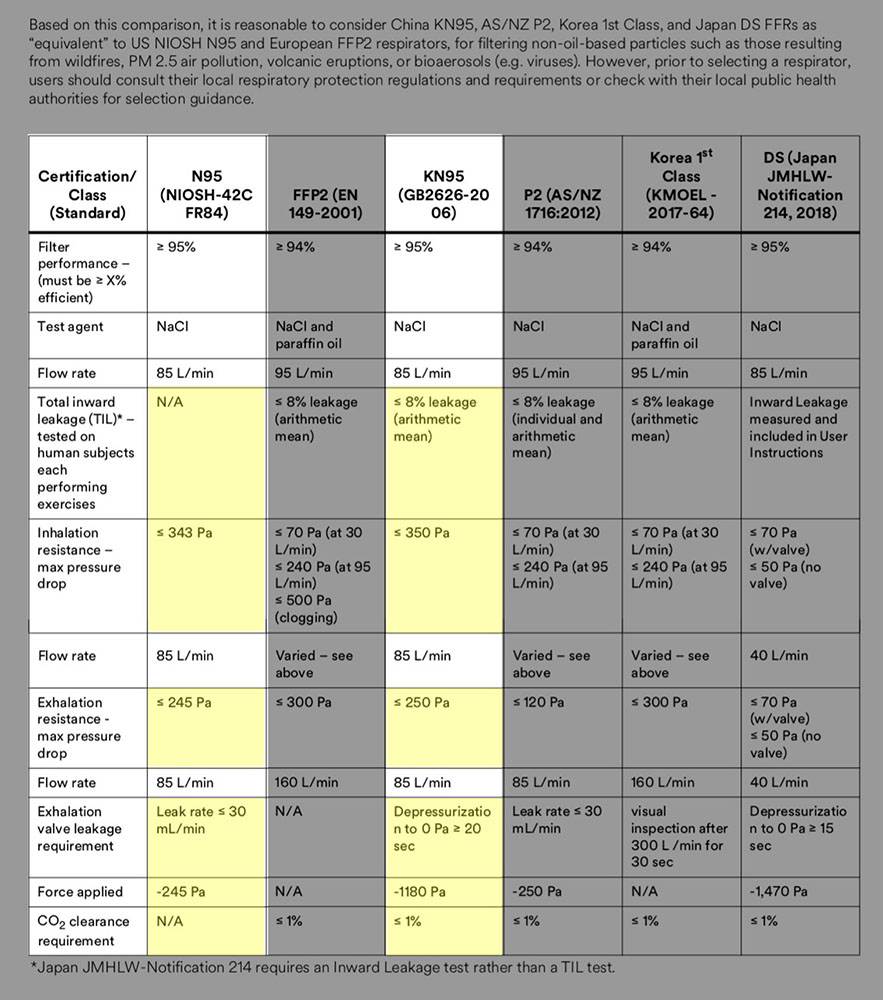What is an N95 mask?
 With the pandemic, health professionals are recommending we wear a face mask or covering in public. You’ve probably heard about N95 masks and know that they’re meant to be worn by health professionals (doctors, nurses, etc.). You might be wondering what makes an N95 different than a homemade mask? What is a KN95 mask? How are they different than N95 masks? I won’t be discussing homemade masks in depth. I’ll be focusing on comparing the N95 and KN95 masks.
With the pandemic, health professionals are recommending we wear a face mask or covering in public. You’ve probably heard about N95 masks and know that they’re meant to be worn by health professionals (doctors, nurses, etc.). You might be wondering what makes an N95 different than a homemade mask? What is a KN95 mask? How are they different than N95 masks? I won’t be discussing homemade masks in depth. I’ll be focusing on comparing the N95 and KN95 masks.
An N95 mask/respirator is a facepiece that filters out at least 95% of airborne particles. They’re medical grade, which means they meet the standards of NIOSH, the U.S. National Institute for Occupational Safety and Health.
N95 masks are the most common facepiece and are particulate filters. They don’t filter out vapors or gases. There are different classes of face masks for different levels and types of protection. They’re made of a fine mesh of synthetic polymers fibers to trap very fine particulates, such as dust and viruses. The particulates measured in tests are 0.5 micrometres.
They function the same as KN95 masks, but they go through a slightly different testing and certification process since the KN95 masks are made and regulated in non-U.S. jurisdictions, such as China and Korea.
What is a KN95 mask?
As mentioned above, they function the same as N95 masks, but the testing and standards are different. There is a minimal difference, but I will go into more detail about the standards. KN95 masks must meet Chinese and Korean testing standards.
What are the Standards for N95 and KN95 masks?
 N95 masks must meet the standards of NIOSH. They filter out 95% of airborne particles. Exhalation valve leakage requirement is no greater than 30 mL/ min. They don’t test for inward leakage or have a C02 clearance requirement.
N95 masks must meet the standards of NIOSH. They filter out 95% of airborne particles. Exhalation valve leakage requirement is no greater than 30 mL/ min. They don’t test for inward leakage or have a C02 clearance requirement.
KN95 masks must meet Chinese standards, which are similar. They also filter out 95% of particles. KN95 masks are tested for inward leakage. The acceptable rate is 8%. Exhalation valve leakage requirements are measured differently for KN95 masks – depressurization to 0 Pa in less than 20 seconds. They do have a C02 clearance requirement of 1%. The force applied in testing is much higher than for N95 masks (1180 Pa vs. 245 Pa). They’re made of 4 layers.
They are both tested with NaCl as an agent. The flow rate is 85 L/min for both N95 and KN95 masks. Test agents are an aerosol that’s generated during the filter performance test.
The inward leakage is tested by a wearer in a chamber for 3 minutes breathing normally. The specific aerosol that enters the mask is measured. The particulates measured, as mentioned before, are about 0.5 micrometers.
What is the Same in N95 and KN95 Masks?
As mentioned before, they are both face masks/respirators that filter out airborne particulates. They both function the same and have the same efficacy. They both prevent 95% of airborne particulates from getting through the mask. They’re also both medical grade masks. They both have rigorous testing and standards.
They look different than the white or blue rectangular, disposable surgical masks we usually associate with medical professionals. They’re rounded, usually with a wire molded to fit the mask tightly around your nose.
What are the Differences Between N95 and KN95 Masks?
Mainly the testing and standard requirements. Chinese testing for KN95 is slightly more rigorous than U.S. testing for N95 masks. As mentioned above, China tests for inward leakage and have a C02 clearance requirement. The force used in testing for KN95 masks is roughly 4 times higher than in N95 masks, as you read above.

How Effective Are They at Blocking Out Viruses?
They both prevent 95% of airborne particulates, including viruses, from going inside and out of the mask, so unlike other face coverings, they also protect the wearer from airborne droplets (coughs and sneezes). Homemade and non-medical grade face masks and coverings are more effective at preventing droplets from going outwards and becoming airborne. They were recommended only for people that are symptomatic. Now everyone is encouraged to wear a face covering, but please leave the medical-grade masks for health professionals.
